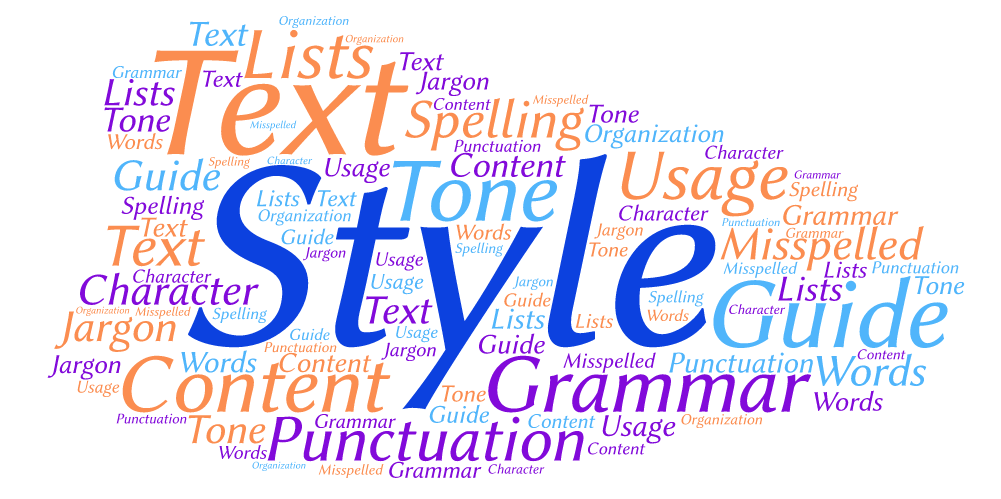
When you decide on a fashion style, you are letting people know who you are through your fashion choices. So if you wear yoga pants, sneakers, and a sleek down vest, people are going to make assumptions about you that are different from the assumptions they would make if you wore high-heeled pumps, a black suit, and a silk shirt. A style guide does the same thing for your organization’s content “personality” and gives employees and contributing writers a format to follow. A style guide should:
- Explain the tone and character you want your organization to have. For example, if you work for a healthcare organization, your style character might be “providing expert information in a compassionate and caring way.” If you are working for The Onion, it may be “the more bizarre and hilarious, the better.” Establishing your content’s “personality” will help determine some of the more detailed choices you make for your organizational style guide. A healthcare organization is likely to advise its writers not to use slang, for example, while it may be a great idea for Onion writers.
- Describe any specific grammar/punctuation rules the organization chooses to follow. For example, some organizations use the Oxford comma (the one that comes before “and” in a series, as in orange, banana, plum, and apple) and some don’t. Other organizations may capitalize job titles or use % rather than writing the word “percent.” Another common style guide element is guidance on how to set up and punctuate bulleted lists. Will there be a period at the end of each bullet line? No punctuation? A semi-colon? Use the style guides below for guidance if you don’t already have your organization’s specific grammar and punctuation styles set.
- List words that should be used and those that should never be used. One of my clients is a nonprofit that funds and disseminates practical autism research that can be used by families, educators, and therapists. It always refers to “people with autism,” never to “autistic people.” Another client that provided information about health care careers included a list of how to refer to people with different ethnic backgrounds, using African-American, for example, rather than black and American Indian instead of Native American and so on.
- Offer guidance on when and how to use italics, bolding, and underlining.
- Provide basic information on correct punctuation and grammar. It’s helpful to include lists of commonly misspelled words as part of the style guide as well.
In addition, an organization may provide:
- Boilerplate descriptions of the organization and its mission that should always be used
- Guidance for when to use the organization’s full name and when to use a shortened version
- Guidance for when and how to use jargon specific to its industry/mission
- Any legal rules that must be followed, such as remembering to include photo credits, proper use of disclaimers, how to post copyright notices, etc.
You don’t have to start from scratch when you put together a style guide. There are a number of style guides that you can use as references to get started on your organization’s style guide. These are among the most commonly used style guides:
- AMA Manual of Style, published by the American Medical Association, is used mostly by science and medical writers and organizations.
- AP Stylebook, from the Associated Press, is a writing guide for journalists. It is the one I use most often and highly recommend to many clients.
- Chicago Manual of Style is mostly used by book authors, but it’s a useful guide for anyone. It covers just about every style question you might have.
- Publication Manual of the American Psychological Association, more generally referred to as the APA style guide, is also used primarily by science and medical writers and organizations.
- MailChimp Content Style Guide is MailChimp’s internal style guide, meant for those who write online content, including email newsletters. It’s free to anyone who wants to use it.
- MLA Handbook, published by the Modern Language Association, is used for scholarly publications and content.
- U.S. Government Printing Office Style Manual is used by federal agencies and those who work with and for those agencies.
- Yahoo! Style Guide, which oddly is only available in hard copy, is a good and thorough resource for writing for the web.
It’s a good idea to pick one or two style guides your employees and contributing writers can use, supplemented by a guide that spells out specific organizational style.
Once you have a style guide, make sure it is available to everyone who needs it and that they understand they are responsible for abiding by its rules (so as not to burden your communications team with the responsibility of copyediting for organizational style). The style guide should be a living document. Once again, like fashion, it’s going to evolve as punctuation, grammar, and word choice styles evolve and as your organization adapts to its current environment. Need help putting the guide together? AlmsInk is happy to help you with that and your other communications needs.
The style guide should be a living document. Once again, like fashion, it’s going to evolve as punctuation, grammar, and word choice styles evolve and as your organization adapts to its current environment. Need help putting the guide together? AlmsInk is happy to help you with that and your other communications needs.
Need help putting the guide together? Email Sherri Alms for help with that and your other communications needs.
